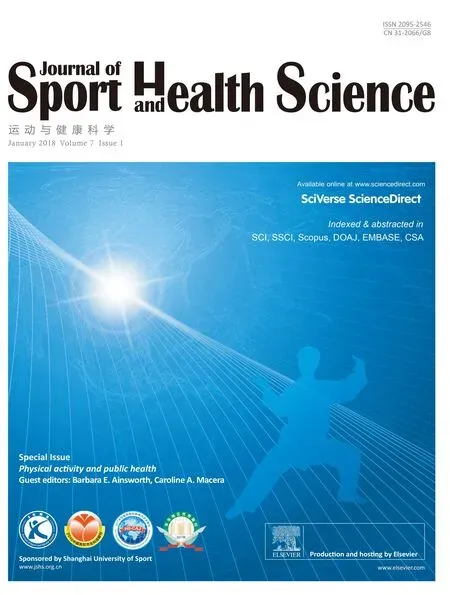Exercise vs.high altitude therapy
Francesco Misiti
Department of Human Sciences,Society and Health,University of Cassino and Southern Lazio,Cassino 03043,Italy
Dear editor,
The metabolic and therapeutic effects of regular exercise on lifestyle-related chronic disease have been long established,but the molecular bases for adaptive changes in metabolic functions remain an area of intense research.
Recently,an elegant study1demonstrated that faster acclimatization to high altitude upon re-ascent depends on degradation of equilibrative nucleoside transporter(eENT1),localized on the external face of erythrocytes,induced by a signaling pathway involving adenosine binding to the specific erythrocyte adenosine receptor A2B(ADORA2B).This eENT1 deletion allows for rapid accumulation of plasma adenosine to counteract hypoxic tissue damage.Of note,reduced eENT1 resulting from initial hypoxia is maintained upon re-ascent in humans or re-exposure to hypoxia in mice.
The reported plasma adenosine levels were almost double upon re-ascent to high altitude than on the first hypoxia exposure at the same altitude for 1 day.1Intriguingly,sphingosine 1-phosphate(S-1P),a bioactive signaling lipid generated at high levels in erythrocytes,responsible for triggering O2delivery under hypoxic conditions,displayed the same trend as elevated extracellular adenosine.2Interestingly,the role of adenosine in adaptive mechanisms has also been implicated in the field of exercise training.3Exercise affects the purinergic system in erythrocytes and platelets.4In particular,increases in adenosine triphosphate(ATP)and its metabolites in blood plasma following exercise have been related to the ability of red blood cells to release ATP in areas of low oxygen tension,as well to rise ectonucleotidase(NTPDase)activities in platelets and red blood cells.It would be interesting to evaluate the levels of eENT1 and S-1P in erythrocytes,after targeted exercise interventions based on factors such as mode,intensity,or duration,with a translational perspective to an adaptive mechanism involved in exercise training.It should be noted that these results could be of interest for our understanding of the mechanisms underlying hypoxia related pathologic conditions,such as cardiovascular,hemolytic,and respiratory diseases,and the maintenance of metabolic and functional capacity with aging.More experimental data are needed to confirm the mechanisms reported here.Nonetheless,eENT1 and S-1P in erythrocytes may enhance the effects of exercise training without exposure to high altitude.Exercise intervention is an effective and inexpensive alternative to high altitude therapy,easy to access,and not limited to geographic conditions and timing of exposure to high altitudes.
Competing interests
The author declares that he has no competing interests.
1.Song A,Zhang Y,Han L,Yegutkin GG,Liu H,Sun K,et al.Erythrocytes retain hypoxic adenosine response for faster acclimatization upon re-ascent.Nat Commun2017;8:14108.doi:10.1038/ncomms14108
2.Sun K,Zhang Y,D’Alessandro A,Nemkov T,Song A,Wu H,et al.Sphingosine-1-phosphate promotes erythrocyte glycolysis and oxygen release for adaptation to high-altitude hypoxia.Nat Commun2016;7:12086.doi:10.1038/ncomms12086
3.Simpson RE,Phillis JW.Adenosine in exercise adaptation.Br J Sports Med1992;26:54-8.
4.Gorman MW,Rooke GA,Savage MV,Jayasekara MP,Jacobson KA,Feigl EO.Adenine nucleotide control of coronary blood flow during exercise.Am J Physiol Heart Circ Physiol2010;299:H1981-9.
 Journal of Sport and Health Science2018年1期
Journal of Sport and Health Science2018年1期
- Journal of Sport and Health Science的其它文章
- Physical activity guidelines for Chinese children and adolescents:The next essential step
- Promoting physical activity in a public health context
- “Excessive muscle strain as the direct cause of injury”should not be generalized to hamstring muscle strain injury in sprinting
- Translating science to inform global policy on physical activity
- Environments favorable to healthy lifestyles:A systematic review of initiatives in Canada
- Feasibility of using pedometers in a state-based surveillance system:2014 Arizona Behavioral Risk Factor Surveillance System
